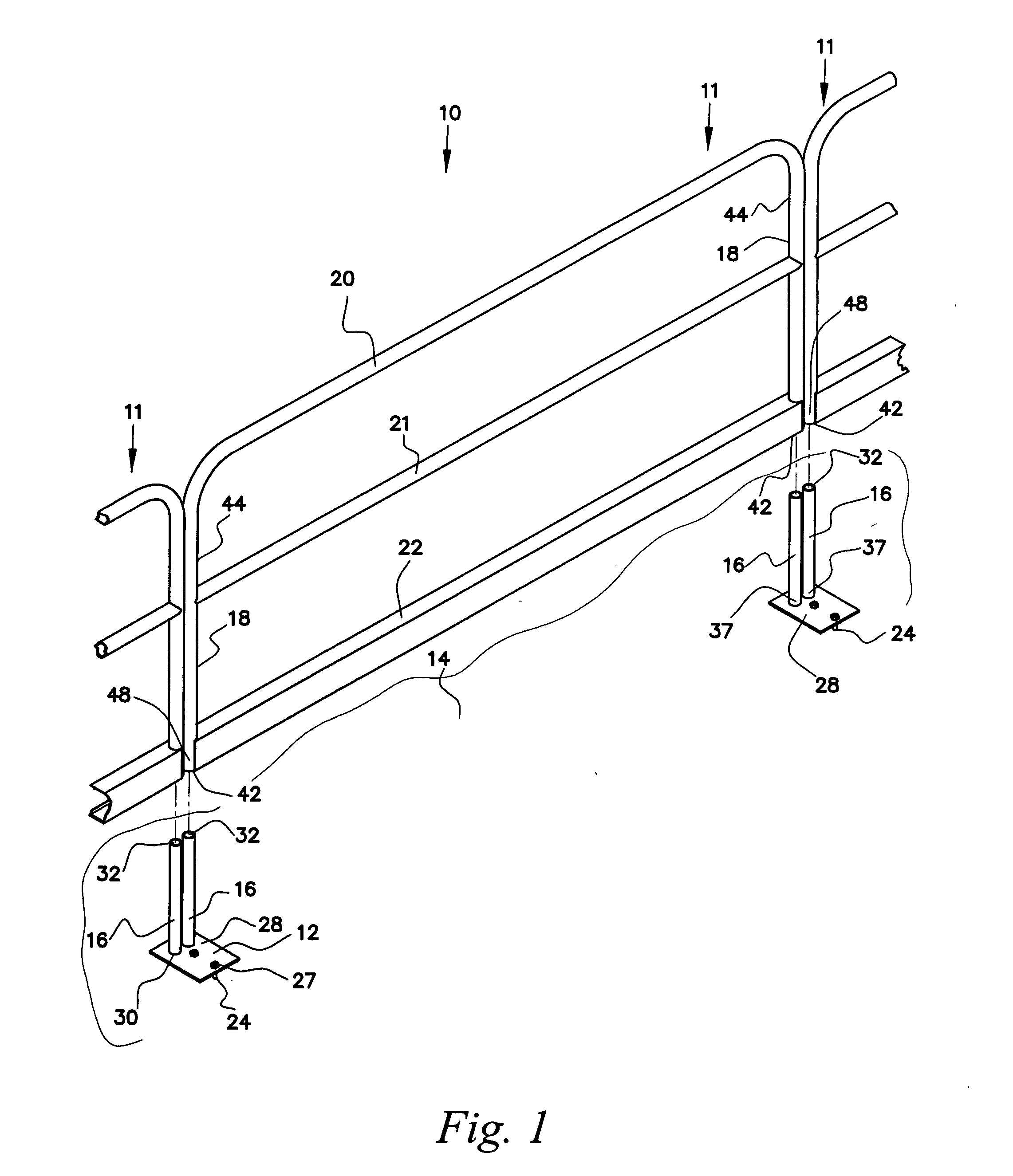Metal safety rail for open floors of a building under construction
a technology for safety rails and floors, applied in the direction of manufacturing tools, roads, traffic restrictions, etc., can solve the problems of destroying wood safety rails, laborious and expensive process of assembling and disassembling wooden safety rails, and reducing safety rails. , to achieve the effect of preventing lost or damaged joining members, minimizing time and cost of assembling and disassembling safety rails, and maintaining safety
- Summary
- Abstract
- Description
- Claims
- Application Information
AI Technical Summary
Benefits of technology
Problems solved by technology
Method used
Image
Examples
Embodiment Construction
[0036]Referring now to FIGS. 1-3, a safety rail for the perimeter of an open floor of building under construction is denoted as numeral 10. The safety rail 10 includes multiple rail sections 11 disposed upon adjacent spatially separated baseplates 12 that are secured to a floor surface 14 via anchor bolts 24 integrally inserted into a floor portion 27. Cooperating nuts 27 are rotationally secured to the anchor bolts 24 until the nuts 27 forcibly engage the baseplates 12. The baseplates 12 include a pair of substantially vertical inner stanchions 16 iritegrally joined to each baseplate 12 via welding or similar means well known to those of ordinary skill in the art. The rail sections 11 are secured to the baseplates 12 via substantially vertical outer stanchions 18 integrally formed into the rail sections 11, the outer stanchions 18 are snugly slid upon cooperating inner stanchions 16 by an individual such that the rail sections 11 are vertically maintained when released by the indiv...
PUM
| Property | Measurement | Unit |
|---|---|---|
| Angle | aaaaa | aaaaa |
| Height | aaaaa | aaaaa |
| Distance | aaaaa | aaaaa |
Abstract
Description
Claims
Application Information
 Login to View More
Login to View More - R&D
- Intellectual Property
- Life Sciences
- Materials
- Tech Scout
- Unparalleled Data Quality
- Higher Quality Content
- 60% Fewer Hallucinations
Browse by: Latest US Patents, China's latest patents, Technical Efficacy Thesaurus, Application Domain, Technology Topic, Popular Technical Reports.
© 2025 PatSnap. All rights reserved.Legal|Privacy policy|Modern Slavery Act Transparency Statement|Sitemap|About US| Contact US: help@patsnap.com



